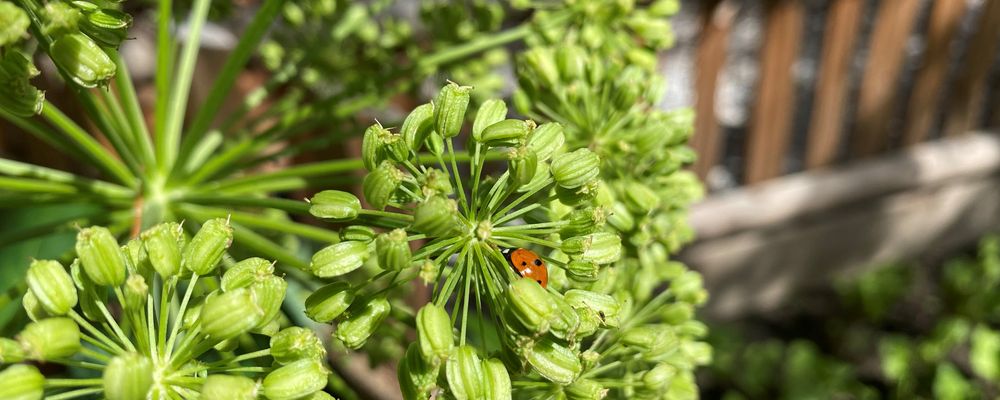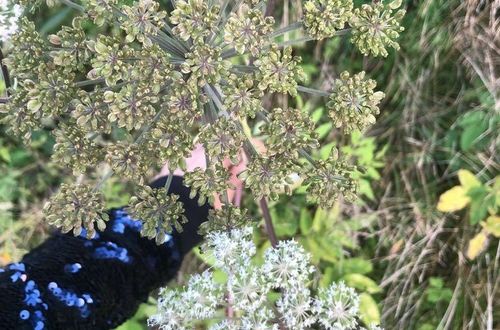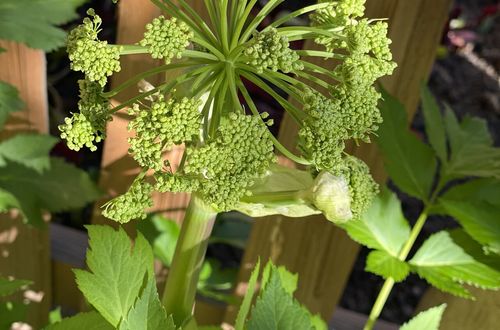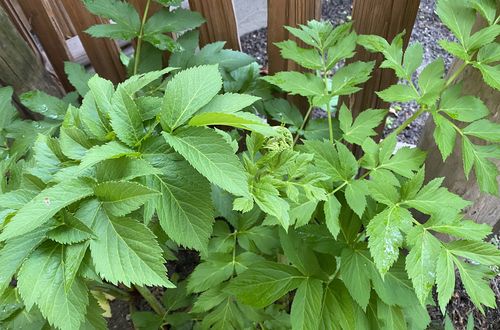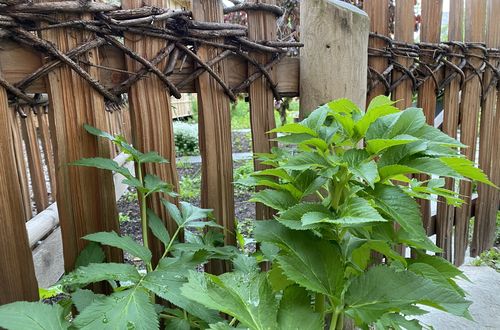Small herb encyclopedia
Angelica archangelica – the herb of the angels
June 25, 2021
Legend has it that archangel Michael appeared to a monk in a dream and showed him the healing powers of the angelica root. The “herb of the angels” as it is sometimes called was chewed as a remedy to the plague. To this day, the herb is valued for its versatile properties, which trained herb instructor Christina Binder-Egger will introduce you to. Have fun!
At the beginning of my training to become an herb instructor, all participants drew straws, on which a plant name was written. Over the next weeks and months, we were supposed to become close friends with this plant and learn everything about it and then inform our colleagues about it in the form of a presentation at the end of our training. While the other trainees were assigned to classic medicinal plants such as marigold, arnica, or chamomile, written on my straw was the word ‘angelica’.
I had never come across this herb before. The eyes of our herb expert lit up as she congratulated me on the straw I selected. What she meant was “You will have a lot of fun with this herb”. I was skeptical.
As hard as I tried, angelica remained a mystery to me. Wherever I looked, I couldn’t find it anywhere. One evening I made the decision to do away with my negative attitude and open myself up to the plant. I concentrated and read through the plant course materials: what growing conditions do they prefer and where do they often thrive? I set off on a walk towards Hainzenberg. According to the descriptions, they are supposed to grow here on the edge of the forest. And there they were! Their white umbels were shining, and the pinnate leaves swayed in the gentle evening breeze as though they were waving at me.
I looked around and saw that the entire edge of the trail was overgrown with wild angelica, which was easily identifiable by its conspicuous, inflated leaf sheath. I had simply never noticed it before, but now it was revealing itself to me.
Angelica sylvestris or wild angelica grows here in Tyrol in shady, nutrient-rich areas on the edge of forests and trails. We have planted medicinal angelica in our herb garden as was previously the custom. Angelica archangelica grows for 2 to 4 years before flowering once (hapaxanth). It reaches a height of a half meter to over 3 meters.
The flower head with a double umbel consists of 20 to 40 rays, which form a lovely semi-sphere. The many hermaphrodite flowers smell strongly of honey and are pollinated by bees, which visit us from their beehive in the neighboring parish garden.
The root, called Angelicae radix, is most often used. It belongs to the class of amara drugs because it contains bitter compounds and essential oils among other substances.
Effects of angelica:
• promotes digestion
• carminative (relieves flatulence)
• promotes the flow of bile and is a spasmolytic (relaxes)
• promotes menstruation
• antimicrobial
• soothes nerves
• stabilizing, anxiolytic, gives courage
Angelica is used for light stomach-intestinal cramping, loss of appetite, feeling of fullness, slowed digestion, flatulence, to promote the secretion of gastric juices, and for anorexia and bronchitis.
Thanks to its “angel-given” powers, magical angelica is also in a position to heal psychological wounds and scars. Its other name, the “anti-anxiety root”, reveals that is strengthens the nerves. As a protective plant, it brings light and warmth to the stomach and soul. As a tonic, it is used in convalescence and for general infirmities such as chronic illnesses.
As a first for trained herb experts, we have extracted a hydrolate from the herb and the root so that it can be used as a protective spray. A leathery, earthy, masculine fragrance fills the Herbarium kitchen. The angelica hydrolate has been very well received among our colleagues. They use it for their children when they can’t fall asleep. It helps with feelings of anxiety and stress caused by exams and dispels doubt and worry.
Since angelica is slightly toxic, you should use caution when handling it. Its oil is slightly toxic in larger amounts. Very sensitive people may have a dermatitis reaction upon skin contact with fresh plant juice and sunlight.
Preparation of the tea
Pour a teaspoon (2 to 4 g) of angelica root in ca. 150 ml of boiling water.
Strain it after 10 minutes.
It is also possible to make it with cold water or create a decoction.
For appetite stimulation, drink a cup of warm tea 2 to 3 times a day a half hour before mealtimes. For digestive problems, you should drink the tea after eating. The mild but slightly sweet bitterness goes well with other herbs to soothe the stomach such as yarrow, wormwood, carraway, or fennel. It triggers a soothing, warming feeling in the stomach.
For legal reasons, we would like to expressly point out: please clarify with your primary care physician in advance if our recommendations are suited for you. They are based on experience without a medical background.
Even in childhood, Christina Binder-Egger was out and about in nature with her Aunt Lisi. Early on, she learned about the local herbs, fruits, and mushrooms from her and fell in love with them. Christina is a trained herb instructor. Her knowledge forms the basis for Malis’ herb concept.
